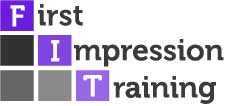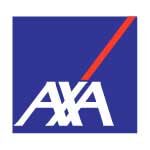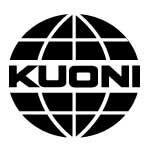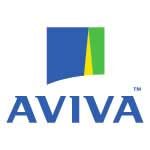How can you measure the impact & benefits of staff training?
The Kirkpatrick Evaluation Model remains one of the most robust tools for measuring the effectiveness of any kind of training. Donald Kirkpatrick, former Professor Emeritus at the University of Wisconsin, first published his model in 1959 and in 2016, Kirkpatrick’s wife and son, James revised and clarified the original theory, introducing the ‘New World Kirkpatrick Model’ in their book Four Levels of Training Evaluation.
One of the main additions is an emphasis on the importance of making training relevant to people’s everyday jobs. Each successive level of the model represents a more precise measure of the effectiveness of a training programme, namely Reaction, Learning, Behaviour and Results.
Level 1: Reaction
It’s important to gauge the learner’s reaction to the training – you want them to feel that the training has been valuable and measuring how engaged the learner was; how actively they contributed and how they reacted to the training helps you to understand how well they received it and therefore, how useful and valuable it has been to them.
Kirkpatrick cites the importance of asking questions to elicit this feedback, both during and after the training, which can be conducted through delegate feedback forms (or Happy Sheets 😊) &/or employee engagement surveys pre & post the training and can include questions such as:
Did you feel that the training was worth your time?
Did you think that it was successful?
What were the biggest strengths and weaknesses of the training?
Did you like the venue and presentation style?
Did the training session accommodate your personal learning style?
Were the training activities engaging?
What are the 3 most important things that you learned from this training?
From what you learned, what do you plan to apply in your job?
What support might you need to apply what you’ve learned?
In-the-moment feedback is also important, testing people’s feelings and emotions about the learning experience, while, they’re still ‘in it’ and this is also a good opportunity to get some real-time verbatims or testimonial from learners (assuming the feedback is positive of course!)
Level 2: Learning
Level 2 focuses on measuring what the learner has actually LEARNED (or not learned!) and what they will actually do DIFFERENTLY as a direct result of the training, together with how confident and motivated they feel to be able to make the changes.
This stage demonstrates how training has developed the learner’s knowledge, skills and attitudes, as well as their confidence and commitment to effecting change once they’re back at-desk.
To measure how much the trainee has learned, it’s important to start by identifying what you want to evaluate. All training, whether you’re designing & delivering this internally or employing the services of an external training provider, should have specific learning objectives and planned outcome, so these should be your starting point.
You can measure learning in different ways, depending on the objectives, although it’s helpful to measure these areas both before and after any training intervention.
TNA (Training Needs Analysis) questionnaires are a really good start point for identifying individual training needs and can be completed using the 360 degree feedback model, where line managers, senior leaders, internal customers (other departments), external customers etc all complete a TNA questionnaire for the individual learner &/or team as a whole.
1:1 interviews or focus groups can also be carried out as a means f testing learning, both pre and post the training programme and there ae lots of online tools measuring level of retention / value to the learner, using assessment tools and polls, which are also an effective way to measure the impact of the learning experience.
Level 3: Behaviour
This level of measurement helps you to understand how well your staff are applying the training. It can also reveal where people might be struggling and require further help and support. It’s important to remember however, that behaviour can only change when conditions are favourable AND there needs to be full sponsorship from the top, to empower people to behave differently and feel comfortable and supported while making the shift.
It’s all too easy, if you’re the Team Leader or Coach and you’re monitoring and assessing your team members after a training session, to conclude that, because you’ve seen or heard little change in your people, that they learned nothing and therefore, the training was ineffective.
It’s quite possible however, that they actually learned a lot, although there may be a number of organisational or procedural or cultural obstructions that are negatively impacting personal change. Perhaps existing processes mean that there’s little scope to apply new thinking, or current practices don’t support the new way of working that the training has taught them, for example?
As a result, your people don’t feel confident in applying new knowledge, or see few opportunities to do so. Or, they may not have had enough time to put it into practice.
Be sure to develop processes that encourage, reinforce and reward positive changes in behaviour. The Kirkpatrick Model refers to these processes as ‘required drivers.’ A brilliant measurement tool to test someone’s personal motivational drivers is McLelland’s Motivational Psychometric Test. You can download a copy here
It’s a great way to ensure you’re pressing the right ‘hot buttons’ or responding to your staff’s key motivational drivers, to ensure you’re getting the very best out of them. Again, this test can be completed both pre and post training, so that differences in levels of motivation both before and after, can then be measured effectively.
Another great way to measure behaviour change is to conduct observational exercises in the live environment – Manage By Walking About (MBWA) and carry out regular side-by-side coaching and mentoring of your people while they’re live at-desk…seeing is believing remember, so make sure you get up close & personal with your people before and after training to emotionally temperature check the motivational climate – gut feel plays its part here, big time!
Level 4: Results
At this level, you analyse the final results of your training, which will include assessment of the objectives and planned outcomes against actual results. Many organisations have some very clever tools and dashboards to effectively measure results, which can demonstrate a healthy return on investment (ROI).
Level 4 will likely be the most costly and time-consuming stage of applying the Kirkpatrick Model. Your biggest challenge will be to identify which outcomes, benefits, or final results are most closely linked to the training, and to come up with an effective way to measure these outcomes in the long term.
There are also some really cool tools around now for measuring a whole host of Key Performance Indicators (KPIs) relating to staff training including:
+ Staff productivity & performance
+ Customer experience – CSAT scores & NPS ratings
+ Employee engagement
+ Customer loyalty & Lifetime Value
+ Staff attrition & retention
+ Bottom line profits
+ Culture change – motivation, attitude, behaviours
+ Staff sickness & absenteeism
While NPS (Net Promoter Score) is still seen as one of the most effective ways to measure customer satisfaction & brand loyalty, there are a number of ‘new kids on the block’ – NEV scores (Net Emotional Value) and Customer Journey Analytics (CJA), which is all about the “weaving together of every touchpoint that a customer interacts with, across multiple channels and over time… “
CJA methodologies give customer experience professionals a powerful tool to understand and engage with individual customers at a personal level, at scale. By analysing millions of data points in real-time, you can discover the most important customer journeys and prioritize those opportunities that significantly impact business goals, like increasing revenue, reducing churn and improving customer experience.
The best companies for advice about Customer Journey Analytics are https://www.mckinsey.com and https://www.pointillist.com
It is important to clearly set out the key performance metrics you want to improve as a result of the training, such as customer satisfaction, employee engagement, customer loyalty, staff sickness &/or absenteeism, employee behaviour – AND there are some excellent suppliers of these tools who provide expert consultancy support around measuring customer and employee experience including specialist consultancy Performance in People, which you can find out more about at www.performanceinpeople.co.uk
My colleague and fellow judge at the UK Customer Experience Awards, Ian Golding (who is chairman of the awards) and Founder of the brilliant Customer Experience Consultancy – who do exactly as the name suggests – is definitely worth a conversation with if you’re looking for ways to measure those fundamental performance metrics I’ve talked about here.
You can find out more about Ian and his Customer Experience Consultancy at www.ijgolding.com
Here at First Impression Training, we follow a success framework known as our SHAPE Model and step 1 is the SCREENING process where we evaluate current state of play vs business objectives and expected outcomes.
A key part of this stage of the model is to interrogate MI around those performance metrics, such as current CSAT & NPS scores, Voice of Customer data, sickness & absenteeism rates, employee engagement surveys etc., so that we can accurately track performance improvements in these measures as the training solution is rolled out and embedded into business as usual.
As Peter Drucker, father of management thinking taught us… “if you can’t measure it, you can’t improve it AND you can’t manage what you can’t measure….” which means that you can’t know whether or not you are successful unless success is clearly defined and tracked – from the very start to the very end of the learning & development journey!
Hello... I'm Marie Cross
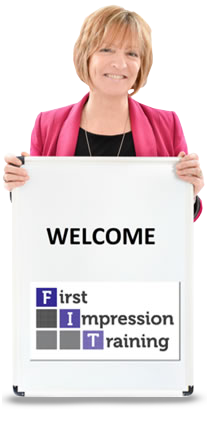
‘…and I’d love to include you in our growing list of readers who are discovering new, practical ways to develop remarkable service in their call, contact and customer service centres.’
If you’d like to receive regular updates on developing world class customer service in your contact centre then simply complete the form below, click the button and you’ll receive a regular flow of ideas, hints, tips and techniques straight to your inbox.
Simply fill in your details to claim your 12 Success Blueprints...
There are 12 Success Blueprints – FIT bulletins that are jam-packed with practical, quick and easy hints, tips and ideas to help you stay on track, keep positive and remain motivated to succeed right there on the frontline!
